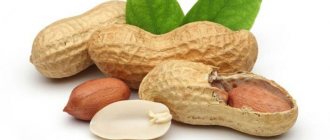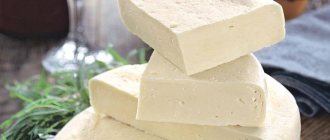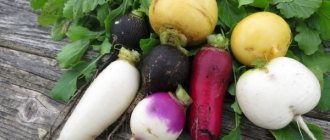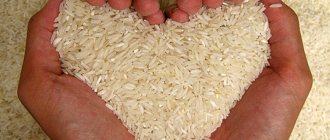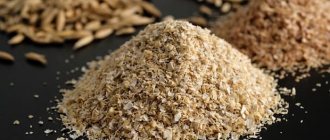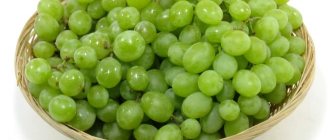Dietary properties:
How many calories are in boiled beef, what dietary properties it has, all this is of great interest to those who lead a healthy lifestyle and monitor their health and figure. So we will try to answer these questions in the next article.
So:
Boiled meat is used when chemical sparing of the gastric mucosa is necessary, for example, during exacerbation of chronic gastritis with increased acidity of gastric contents, during exacerbation of gastric and duodenal ulcers, or in diets for weight loss.
In dietary nutrition, it is usually recommended to use meat containing a small amount of fat.
To prepare beef and meat dishes from it, it is best to consume meat from young animals. It is easy to distinguish by color: light pink, as a rule, is the color of meat from young animals, and dark red, almost burgundy, from old animals. If the veins are practically absent or have insignificant volume and a bright white color, we are dealing with the meat of a young animal. The more dark yellow fat, the older the animal.
When you are not sure of the absolute freshness of meat, it is better to boil it rather than fry it, since long-term cooking kills the bacteria that may contaminate it.
Beef calories
Beef is considered one of the least calorie types of meat, but energy values differ. This is due to two reasons:
- the number of calories is affected by what part of the carcass is taken (breast, fillet, thigh, neck, offal, etc.);
- what method of heat treatment the meat was subjected to (stewing, boiling, baking, frying).
Let's talk about everything in order. The carcass of a cow or bull is butchered differently in all countries of the world. In our country, they are cut into the following parts: neck, brisket, thin and thick edge, sirloin (loin), tenderloin, peritoneum (flank), shoulder, rump, thigh, flank, rump, shank. These parts of the carcass are classified into three classes:
- First grade - breast and back parts, rump, rump, fillet, sirloin. This variety is also called superior.
- The second grade is the shoulder parts and shoulder blades, as well as the flank.
- The third grade is front and back shanks.
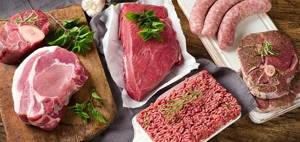
© bit24 – stock.adobe.com
Such meat can be lean (no fat at all), lean, or fatty. As mentioned earlier, the caloric content of all parts of the carcass is different. You can see the total number of calories and energy value of fresh pieces in the table below.
| Raw part of the carcass | Calorie content per 100 g | Energy value (BZHU) |
| Hip | 190 kcal | 34 g protein, 4 g fat, 9.7 g carbohydrates |
| Tenderloin | 182 kcal | 19.7 g protein, 11 g fat, no carbohydrates |
| shank | 196 kcal | 18 g protein, 7 g fat, no carbohydrates |
| Brisket | 217 kcal | 19 g protein, 15.7 g fat, no carbohydrates |
| Kostrets | 218 kcal | 18.6 g protein, 16 g fat, 0.4 g carbohydrates |
| Spatula | 133 kcal | 18.7 g protein, 6.5 g fat, no carbohydrates |
| Rump | 123 kcal | 20 g protein, 4.5 g fat, 0.2 g carbohydrates |
| Ribs | 236 kcal | 16.4 g protein, 19 g fat, no carbohydrates |
| Thick edge | 164 kcal | 19 g protein, 10 g fat, 0.5 g carbohydrates |
| Thin edge | 122 kcal | 21 g protein, 4 g fat, no carbohydrates |
| Fillet | 200 kcal | 23.5 g protein, 7.7 g fat, no carbohydrates |
| Neck | 153 kcal | 18.7 g protein, 8.4 g fat, no carbohydrates |
| Bone marrow | 230 kcal | 10 g protein, 60 g fat, 20 g carbohydrates |
| Lungs | 92 kcal | 16 g protein, 2.5 g fat, no carbohydrates |
| Brain | 124 kcal | 11.7 g protein, 8.6 g fat, no carbohydrates |
| Liver | 135 kcal | 20 g protein, 4 g fat and carbohydrates each |
| Kidneys | 86 kcal | 15 g protein, 2.8 g fat, no carbohydrates |
| Heart | 96 kcal | 16 g protein, 5.5 g fat, no carbohydrates |
| Language | 146 kcal | 12 g protein, 10 g fat, no carbohydrates |
As you can see, there really is a difference and in some cases significant. For example, an offal such as bone marrow is higher in calories than beef tenderloin, shank, thighs, and brisket. The calorie content of different parts varies depending on how you prepare them: cook in a slow cooker, fry on the grill, stew with vegetables in a frying pan, bake in the oven in foil or a sleeve, steam, etc. There will be a difference even in cooking with or without salt, and also in whether you choose a piece of pure pulp or take meat on the bones.
For example, 100 g of raw fillet contains 200 kcal, boiled fillet - 220, stewed - 232, fried - 384, but baked - 177, steamed - 193. The difference in this case is small, but in smoked, dried, dried form, the number of calories increases significantly: smoked fillet contains 318 kcal, dried fillet - 410, dried - 292. So, when calculating the calorie content of beef, you should take into account which part was chosen and how it will be cooked. These two points are important in calculating the energy value of meat.
Calorie table for foods and ready meals
| Name of the dish | Squirrels | Fats | Carbohydrates |
| Azu | 11,9 | 14,2 | 10,2 |
| Beef Stroganoff | 16,7 | 11,3 | 5,9 |
| Steak | 27,8 | 29,6 | 1,7 |
| Pancakes | 6,1 | 12,3 | 26,0 |
| Ukrainian borscht | 1,1 | 2,2 | 6,7 |
| Boiled pork | 16,4 | 18,3 | 1,0 |
| Dumplings with potatoes | 4,4 | 3,7 | 18,5 |
| Beef goulash | 14,0 | 9,2 | 2,6 |
| Cottage cheese casserole | 17,6 | 4,2 | 14,2 |
| Potato zrazy with cabbage | 3,3 | 3,9 | 15,0 |
| Dumplings | 5,0 | 4,8 | 25,8 |
| Chicken cutlets | 18,2 | 10,4 | 13,8 |
| Boiled chicken fillet | 30,4 | 3,5 | 0,0 |
| Chicken thighs | 21,3 | 11,0 | 0,1 |
| Lagman | 4,3 | 8,9 | 13,3 |
| Pasta boiled with fat | 3,4 | 5,0 | 19,0 |
| Vegetable stew (4 seasons) | 0,5 | 0,1 | 3,8 |
| Meat okroshka with kvass | 2,1 | 1,7 | 6,3 |
| Dumplings | 11,9 | 12,4 | 29,0 |
| Pilaf with lamb (4 seasons) | 4,2 | 6,0 | 14,9 |
| Rassolnik | 1,4 | 2,0 | 5,0 |
| Crab salad | 9,2 | 7,4 | 5,9 |
| Mimosa salad | 5,7 | 14,8 | 7,2 |
| Caesar salad | 15,0 | 10,0 | 9,0 |
| Samsa with chicken | 11,0 | 24,0 | 17,0 |
| Beetroot | 0,5 | 2,0 | 4,2 |
| Pork stew | 9,8 | 20,3 | 3,2 |
| Homemade Solyanka | 3,5 | 3,5 | 4,3 |
| Pea soup | 4,4 | 2,4 | 8,9 |
| Milk soup with pasta | 2,2 | 1,9 | 7,9 |
| Kharcho soup with meat | 3,1 | 4,5 | 5,5 |
| Curd cheesecake | 18,6 | 3,6 | 18,2 |
| Pork meatballs | 7,0 | 10,0 | 12,0 |
| Ear | 3,4 | 1,0 | 5,5 |
| Chakhokhbili with beans (4 seasons) | 6,2 | 5,5 | 3,4 |
| Fresh cabbage soup with potatoes | 1,0 | 3,8 | 2,1 |
| Escalope | 19,0 | 42,8 | 6,8 |
| Milk and dairy products | Squirrels | Fats | Carbohydrates |
| Brynza (cow's milk cheese) | 17,9 | 20,1 | 0,0 |
| Natural yogurt, 2% fat, | 4,3 | 2,0 | 6,2 |
| Kefir 3.2% fat | 2,8 | 3,2 | 4,1 |
| Kefir 1% low-fat | 2,8 | 1,0 | 4,0 |
| Milk 3.2% | 2,9 | 3,2 | 4,7 |
| Milk 2.5% | 2,8 | 2,5 | 4,7 |
| Condensed milk without sugar | 6,6 | 7,5 | 9,4 |
| Condensed milk with sugar | 7,2 | 8,5 | 56,0 |
| Whole milk powder | 26,0 | 25,0 | 37,5 |
| Yogurt 2.5% | 2,9 | 2,5 | 4,1 |
| Ryazhenka 2.5% | 2,9 | 2,5 | 4,2 |
| Cream 10% (low-fat) | 3,0 | 10,0 | 4,0 |
| Cream 20% (medium fat content) | 2,8 | 20,0 | 3,7 |
| Sour cream 10% (low-fat) | 3,0 | 10,0 | 2,9 |
| Sour cream 20% (medium fat content) | 2,8 | 20,0 | 3,2 |
| Dutch cheese | 26,0 | 26,8 | 0,0 |
| Processed cheese | 16,8 | 11,2 | 23,8 |
| Poshekhonsky cheese | 26,0 | 26,5 | 0,0 |
| Russian cheese | 24,1 | 29,5 | 0,3 |
| Swiss cheese | 24,9 | 31,8 | 0,0 |
| Curd | 7,1 | 23,0 | 27,5 |
| Low-fat cottage cheese | 16,5 | 0,0 | 1,3 |
| Cottage cheese 5% low-fat | 17,2 | 5,0 | 1,8 |
| Cottage cheese 9% semi-fat | 16,7 | 9,0 | 2,0 |
| Bread and bakery products | Squirrels | Fats | Carbohydrates |
| Baranki | 16,0 | 1,0 | 0,0 |
| 1st grade wheat flour | 10,6 | 1,3 | 67,6 |
| Wheat flour 2nd grade | 11,7 | 1,8 | 63,7 |
| Wheat flour, grade | 10,3 | 1,1 | 68,9 |
| Seeded rye flour | 6,9 | 1,4 | 67,3 |
| Rusks for tea | 10,0 | 2,3 | 73,8 |
| Drying poppy seeds | 11,3 | 4,4 | 70,5 |
| Wheat bread | 8,1 | 1,0 | 48,8 |
| Rye bread | 13,0 | 3,0 | 40,0 |
| Sliced loaf | 7,5 | 2,9 | 50,9 |
| Loaf of Moscow Region | 7,5 | 2,6 | 50,6 |
| Fats, butter and margarine | Squirrels | Fats | Carbohydrates |
| Confectionery fat | 0,0 | 99,8 | 0,0 |
| Mayonnaise Provencal | 3,1 | 67,0 | 2,6 |
| Table margarine 40% | 0,0 | 40,0 | 0,0 |
| Milk margarine | 0,3 | 82,0 | 1,0 |
| Vegetable oil | 0,0 | 99,0 | 0,0 |
| Butter 72.5% | 1,0 | 72,5 | 1,4 |
| Butter 82% | 0,7 | 82,0 | 0,7 |
| Palm oil | 0,0 | 99,9 | 0,0 |
| Cereals | Squirrels | Fats | Carbohydrates |
| Hercules | 12,5 | 6,2 | 61,0 |
| Buckwheat (done) | 9,5 | 2,3 | 65,9 |
| Buckwheat kernels (buckwheat) | 12,6 | 3,3 | 62,1 |
| Corn grits | 8,3 | 1,2 | 75,0 |
| Semolina | 10,3 | 1,0 | 67,4 |
| Oat groats | 12,3 | 6,1 | 59,5 |
| Pearl barley | 9,3 | 1,1 | 73,7 |
| Wheat groats | 11,5 | 1,3 | 62,0 |
| Millet cereal | 11,5 | 3,3 | 69,3 |
| White rice | 6,7 | 0,7 | 78,9 |
| Oatmeal | 12,5 | 6,0 | 64,9 |
| Barley | 10,4 | 1,3 | 66,3 |
| Vegetables | Squirrels | Fats | Carbohydrates |
| Eggplant | 1,2 | 0,1 | 4,5 |
| Swede | 1,2 | 0,1 | 7,7 |
| Green peas | 5,0 | 0,2 | 13,8 |
| Green bean | 4,0 | 0,0 | 4,3 |
| Zucchini | 0,6 | 0,3 | 4,6 |
| White cabbage | 1,8 | 0,1 | 4,7 |
| Red cabbage | 1,8 | 0,0 | 7,6 |
| Cauliflower | 2,5 | 0,3 | 5,4 |
| Potato | 2,0 | 0,4 | 16,1 |
| Green onion (feather) | 1,3 | 0,0 | 4,6 |
| Leek | 2,0 | 0,0 | 8,2 |
| Bulb onions | 1,4 | 0,0 | 10,4 |
| Carrot | 1,3 | 0,1 | 6,9 |
| Ground cucumbers | 0,8 | 0,1 | 2,8 |
| Greenhouse cucumbers | 0,7 | 0,0 | 1,8 |
| Sweet yellow pepper | 1,3 | 0,0 | 5,3 |
| Sweet green pepper | 1,3 | 0,0 | 6,9 |
| Sweet red pepper | 1,3 | 0,0 | 5,3 |
| Parsley (greens) | 3,7 | 0,0 | 8,1 |
| Parsley (root) | 1,5 | 0,0 | 11,0 |
| Rhubarb (petiole) | 0,7 | 0,0 | 2,9 |
| Radish | 1,2 | 0,1 | 3,4 |
| Radish | 1,9 | 0,0 | 7,0 |
| Salad | 1,5 | 0,0 | 2,2 |
| Beet | 1,5 | 0,1 | 8,8 |
| Tomatoes | 1,1 | 0,2 | 3,7 |
| Cheremsha | 2,4 | 0,1 | 6,5 |
| Garlic | 6,5 | 0,5 | 29,9 |
| Spinach | 2,9 | 0,3 | 2,0 |
| Sorrel | 1,5 | 0,0 | 2,9 |
| Fruits | Squirrels | Fats | Carbohydrates |
| Apricots | 0,9 | 0,0 | 9,0 |
| Quince | 0,6 | 0,0 | 9,8 |
| Cherry plum | 0,2 | 0,0 | 6,9 |
| A pineapple | 0,4 | 0,0 | 10,6 |
| Bananas | 1,5 | 0,0 | 21,8 |
| Cherry | 0,8 | 0,0 | 11,3 |
| Pomegranate | 0,9 | 0,0 | 11,8 |
| Pear | 0,4 | 0,0 | 10,7 |
| Figs | 0,7 | 0,0 | 13,9 |
| Peaches | 0,9 | 0,0 | 10,4 |
| Garden plum | 0,8 | 0,0 | 9,9 |
| Dates | 2,5 | 0,0 | 72,1 |
| Persimmon | 0,5 | 0,0 | 15,9 |
| Cherries | 1,1 | 0,0 | 12,3 |
| Apples | 0,4 | 0,0 | 11,3 |
| Orange | 0,9 | 0,0 | 8,4 |
| Grapefruit | 0,9 | 0,0 | 7,3 |
| Lemon | 0,9 | 0,0 | 3,6 |
| Mandarin | 0,8 | 0,0 | 8,6 |
| Grape | 0,4 | 0,0 | 17,5 |
| Blackberry | 2,0 | 0,0 | 5,3 |
| Strawberries | 1,8 | 0,0 | 8,1 |
| Cranberry | 0,5 | 0,0 | 4,8 |
| Gooseberry | 0,7 | 0,0 | 9,9 |
| Raspberries | 0,8 | 0,0 | 9,0 |
| White currant | 0,3 | 0,0 | 8,7 |
| Black currant | 1,0 | 0,0 | 8,0 |
| Blueberry | 1,1 | 0,0 | 8,6 |
| Fresh rosehip | 1,6 | 0,0 | 24,0 |
| Dried rose hips | 4,0 | 0,0 | 60,0 |
| Dried fruits | Squirrels | Fats | Carbohydrates |
| Dried apricots | 5,0 | 0,0 | 67,5 |
| Dried apricots | 5,2 | 0,0 | 65,9 |
| Raisins with pit | 1,8 | 0,0 | 70,9 |
| Raisins sultanas | 2,3 | 0,0 | 71,2 |
| Cherry | 1,5 | 0,0 | 73,0 |
| Pear | 2,3 | 0,0 | 62,1 |
| Peaches | 3,0 | 0,0 | 68,5 |
| Prunes | 2,3 | 0,0 | 65,6 |
| Apples | 3,2 | 0,0 | 68,0 |
| Legumes | Squirrels | Fats | Carbohydrates |
| Beans | 6,0 | 0,1 | 8,3 |
| Peas | 23,0 | 1,6 | 57,7 |
| Whole peas | 23,0 | 1,2 | 53,3 |
| Soybeans | 34,9 | 17,3 | 26,5 |
| Beans | 22,3 | 1,7 | 54,5 |
| Lentils | 24,8 | 1,1 | 53,7 |
| Mushrooms | Squirrels | Fats | Carbohydrates |
| White fresh | 3,2 | 0,7 | 1,6 |
| White dried | 27,6 | 6,8 | 10,0 |
| Fresh boletus | 2,3 | 0,9 | 3,7 |
| Fresh boletuses | 3,3 | 0,5 | 3,4 |
| Meat, poultry and offal | Squirrels | Fats | Carbohydrates |
| Mutton | 16,3 | 15,3 | 0,0 |
| Beef | 18,9 | 12,4 | 0,0 |
| horsemeat | 20,2 | 7,0 | 0,0 |
| Rabbit | 20,7 | 12,9 | 0,0 |
| Pork lean | 16,4 | 27,8 | 0,0 |
| Pork is fatty | 11,4 | 49,3 | 0,0 |
| Veal | 19,7 | 1,2 | 0,0 |
| Beef liver | 17,4 | 3,1 | 0,0 |
| Beef Kidneys | 12,5 | 1,8 | 0,0 |
| Beef Udder | 12,3 | 13,7 | 0,0 |
| Beef Heart | 15,0 | 3,0 | 0,0 |
| Beef Tongue | 13,6 | 12,1 | 0,0 |
| Pork kidneys | 13,0 | 3,1 | 0,0 |
| Pork liver | 18,8 | 3,6 | 0,0 |
| Pork heart | 15,1 | 3,2 | 0,0 |
| Pork tongue | 14,2 | 16,8 | 0,0 |
| Geese | 16,1 | 33,3 | 0,0 |
| Turkey | 21,6 | 12,0 | 0,8 |
| Chickens | 20,8 | 8,8 | 0,6 |
| Chickens | 18,7 | 7,8 | 0,4 |
| Ducks | 16,5 | 61,2 | 0,0 |
| Sausage | Squirrels | Fats | Carbohydrates |
| Boiled sausage Diabetic | 12,1 | 22,8 | 0,0 |
| Boiled sausage Dietary | 12,1 | 13,5 | 0,0 |
| Boiled sausage Doctorskaya | 13,7 | 22,8 | 0,0 |
| Boiled sausage Lyubitelskaya | 12,2 | 28,0 | 0,0 |
| Boiled sausage Milk | 11,7 | 22,8 | 0,0 |
| Boiled sausage Separate | 10,1 | 20,1 | 1,8 |
| Boiled veal sausage | 12,5 | 29,6 | 0,0 |
| Pork sausages | 10,1 | 31,6 | 1,9 |
| Dairy sausages | 12,3 | 25,3 | 0,0 |
| Russian sausages | 12,0 | 19,1 | 0,0 |
| Pork sausages | 11,8 | 30,8 | 0,0 |
| Boiled-smoked Amateur | 17,3 | 39,0 | 0,0 |
| Boiled-smoked Cervelat | 28,2 | 27,5 | 0,0 |
| Semi-smoked Krakow | 16,2 | 44,6 | 0,0 |
| Semi-smoked Minsk | 23,0 | 17,4 | 2,7 |
| Semi-smoked Poltavskaya | 16,4 | 39,0 | 0,0 |
| Semi-smoked Ukrainian | 16,5 | 34,4 | 0,0 |
| Raw smoked Amateur | 20,9 | 47,8 | 0,0 |
| Raw smoked Moscow | 24,8 | 41,5 | 0,0 |
| Canned meat and smoked meats | Squirrels | Fats | Carbohydrates |
| Beef stew | 16,8 | 18,3 | 0,0 |
| Pork stew | 14,9 | 32,2 | 0,0 |
| Raw smoked brisket | 7,6 | 66,8 | 0,0 |
| Raw smoked loin | 10,5 | 47,2 | 0,0 |
| Ham | 22,6 | 20,9 | 0,0 |
| Eggs | Squirrels | Fats | Carbohydrates |
| Chicken egg | 12,7 | 10,9 | 0,7 |
| Egg powder | 45,0 | 37,3 | 7,1 |
| Protein powder | 73,3 | 1,8 | 7,0 |
| Dry yolk | 34,2 | 52,2 | 4,4 |
| Quail egg | 11,9 | 13,1 | 0,6 |
| Fresh fish and seafood | Squirrels | Fats | Carbohydrates |
| Pink salmon | 20,5 | 6,5 | 0,0 |
| Flounder | 16,5 | 1,8 | 0,0 |
| crucian carp | 17,7 | 1,8 | 0,0 |
| Carp | 16,0 | 5,6 | 0,0 |
| Chum salmon | 22,0 | 5,6 | 0,0 |
| Smelt | 15,4 | 4,5 | 0,0 |
| Bream | 17,1 | 4,1 | 0,0 |
| Salmon | 20,8 | 15,1 | 0,0 |
| Macrurus | 13,2 | 0,8 | 0,0 |
| Pollock | 15,9 | 0,7 | 0,0 |
| capelin | 13,4 | 11,5 | 0,0 |
| Navaga | 16,1 | 1,0 | 0,0 |
| Burbot | 18,8 | 0,6 | 0,0 |
| Sea bass | 17,6 | 5,2 | 0,0 |
| River perch | 18,5 | 0,9 | 0,0 |
| Sturgeon | 16,4 | 10,9 | 0,0 |
| Halibut | 18,9 | 3,0 | 0,0 |
| Blue whiting | 16,1 | 0,9 | 0,0 |
| Carp | 18,4 | 5,3 | 0,0 |
| Large saury | 18,6 | 20,8 | 0,0 |
| Small saury | 20,4 | 0,8 | 0,0 |
| Salaka | 17,3 | 5,6 | 0,0 |
| Herring | 17,7 | 19,5 | 0,0 |
| Whitefish | 19,0 | 7,5 | 0,0 |
| Mackerel | 18,0 | 9,0 | 0,0 |
| Som | 16,8 | 8,5 | 0,0 |
| Horse mackerel | 18,5 | 5,0 | 0,0 |
| Sterlet | 17,0 | 6,1 | 0,0 |
| Zander | 19,0 | 0,8 | 0,0 |
| Cod | 17,5 | 0,6 | 0,0 |
| Tuna | 22,7 | 0,7 | 0,0 |
| coal fish | 13,2 | 11,6 | 0,0 |
| Sea eel | 19,1 | 1,9 | 0,0 |
| Acne | 14,5 | 30,5 | 0,0 |
| Hake | 16,6 | 2,2 | 0,0 |
| Pike | 18,4 | 0,8 | 0,0 |
| Ide | 18,2 | 1,0 | 0,0 |
| Cod liver | 4,2 | 65,7 | 0,0 |
| Squid | 18,0 | 0,3 | 0,0 |
| Crab | 16,0 | 0,5 | 0,0 |
| Shrimp | 18,0 | 0,8 | 0,0 |
| Sea kale | 0,8 | 0,2 | 3,0 |
| Nuts | Squirrels | Fats | Carbohydrates |
| Hazelnut | 16,1 | 66,9 | 9,9 |
| Almond | 18,6 | 57,7 | 13,6 |
| Walnut | 15,2 | 61,3 | 10,2 |
| Peanut | 26,3 | 45,2 | 9,7 |
| sunflower seed | 20,7 | 52,9 | 5,0 |
| Sweets | Squirrels | Fats | Carbohydrates |
| Honey | 0,8 | 0,0 | 80,3 |
| Marshmallow | 0,8 | 0,0 | 78,3 |
| Marmalade | 4,3 | 0,1 | 77,7 |
| Caramel | 0,0 | 0,1 | 77,7 |
| Chocolate candies | 4,3 | 39,5 | 54,2 |
| Paste | 0,5 | 0,0 | 80,4 |
| Granulated sugar | 0,0 | 0,0 | 99,5 |
| Sunflower halva | 11,6 | 29,7 | 54,0 |
| Dark chocolate | 6,9 | 35,3 | 52,6 |
| Milk chocolate | 6,9 | 35,7 | 52,4 |
| Waffles with French fillings | 3,2 | 2,8 | 80,9 |
| Waffles with fat fillings | 3,4 | 30,2 | 64,7 |
| Tube cake with cream | 1,7 | 25,2 | 50,9 |
| Airy cake | 3,1 | 16,3 | 68,5 |
| Gingerbread | 5,8 | 6,5 | 71,6 |
| Assorted cake | 4,7 | 15,0 | 36,0 |
| Cake Prague | 4,6 | 26,5 | 65,1 |
Every person who cares about healthy eating has heard more than once about the importance of proteins in the diet. When compiling a daily menu, it is necessary to take into account the protein content in food products, the amount of which should not be lower than 30%. The same percentage of the total number of elements should be fats, and about 40% should be carbohydrates. Our table will help you understand which foods contain more protein and accurately calculate your daily requirement.
Harm of meat and contraindications for consumption
Despite the fact that beef is a nutritious and healthy product, it, like any meat, also has harmful properties, as well as contraindications for consumption. Red meat has many health benefits, but overeating will only lead to negative consequences. The main thing is to know when to stop. How often can I eat the product? The daily intake of beef is 150 g - this is the average. At the same time, men who engage in physical labor can increase the amount by 30-50 g. But in the end, beef consumption per week should not exceed 500 g.
Otherwise, you will inevitably accumulate toxins and putrefactive bacteria in the colon. This will happen for the reason that the stomach will not be able to digest excess meat, and the intestines will not be able to remove it. As a result, the activity of harmful bacteria will lead to the synthesis of skatole, cresol, putrescine, phenol and other products of rotting food containing a lot of animal protein. The resulting toxins will not only become poison for the intestines and negatively affect its walls, but will also spread throughout the body, affecting internal organs.
Exceeding the norm of protein consumption in beef leads to malfunctions not only of the gastrointestinal tract, but also of the kidneys and liver. Overeating red meat can:
- provoke disturbances in the functioning of the heart;
- increase blood cholesterol levels;
- weaken the immune system;
- lead to the formation of kidney stones;
- cause vascular diseases;
- lead to inflammatory processes in the pancreas and liver;
- increase the risk of cancer.
Scientists also discovered purine bases in beef - organic substances that cause harmful uric acid to accumulate in the body. This compound contributes to the development of urolithiasis, osteochondrosis and gout. Beef can be harmful if consumed from improperly raised animals.
To protect a cow or bull from diseases and increase the weight of the animal, antibiotics and hormones are introduced into its diet. This meat then ends up on store shelves and ends up in our diet. Therefore, you definitely need to look at the quality of the product you are purchasing and buy it only from trusted sellers.
Beef has few contraindications:
- allergy to red meat;
- gout in the acute stage;
- hemochromatosis is a disease associated with the accumulation of iron in the tissues of the body.
If these indicators are present, it is better to refuse to eat beef or reduce the amount of it taken, but only after consulting with your doctor. So, red meat can be harmful if you exceed the meat consumption guidelines. To ensure that boiled, stewed, baked beef (regular or marbled) brings only benefits, control the amount of food consumed.
Benefits of beef

Due to the content of a large number of useful elements in its composition, beef has many positive properties that have a beneficial effect on the human body. Meat is especially useful for a growing body, for people leading an active lifestyle, athletes, as well as those who have suffered injuries, burns and serious illnesses.
Beef is useful in the treatment of urolithiasis, helps to recover from infectious diseases, injuries and burns. The collagen contained in beef helps restore healthy joints.
The benefits of beef, when consumed on a regular basis, are as follows:
- strengthens the immune system and increases the body's protective properties;
- helps speed up metabolism;
- improves vision;
- normalizes the functioning of blood vessels;
- gradually reduces the level of “bad” cholesterol;
- prevents the appearance of atherosclerosis;
- increases blood clotting;
- normalizes stomach acidity;
- cleanses the body of toxins and waste;
- helps in the fight against insomnia.
Beef meat helps the male body well in the synthesis of testosterone (male hormone) and increases potency. It also increases physical endurance, mental activity, and also prevents early baldness by strengthening the hair follicles.
Beef is also beneficial for women:
- relieves chronic fatigue;
- supports the endocrine system;
- helps in restoring the body after heavy menstrual bleeding;
- regulates the functioning of the reproductive organs;
- gives strength to nails and hair.
Beef is especially beneficial for pregnant women, as it provides essential vitamins and minerals not only to the mother, but also to the child.
The benefits of meat in the human diet
The dietary appeal of the finished dish will depend not only on the number of calories in the meat, but also on its taste and benefits to the body.
The importance of meat for a complete diet is undeniable, since it is the main source of proteins, fats and a huge amount of bioactive substances needed by the body. Meat also contains iron, phosphorus and B vitamins, especially a lot of nicotinic acid.
Meat is required most of all in childhood and adolescence, as well as by those who engage in heavy physical labor.
The calorie content of any variety depends on the volume of lipids it contains.
- In beef and lamb cuts, the lipid content can vary from 1 to 26%
- in poultry - from 5 to 39%
- in pork - from 28 to 63%.
In our body, meat protein is broken down into amino acids, from which our own proteins are then built. There is no doubt that there is a lot of protein in some products of plant origin (nuts, seeds, beans, etc.).
Some people prefer soy substitutes. But here it is important to remember that the calorie content of any meat products is less than the calorie content of soy meat, which contains 300 kcal per 100 g.
There are no amino acids not found in plant foods. But in meat the concentration of proteins is much higher, and they are absorbed by the body by 80-95%. Therefore, it must be included in the menu of physically active people and children.
Nutritionists recommend eating a day:
How to choose beef
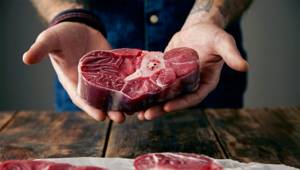
To choose good beef, first of all, you need to pay attention to the storage conditions of the meat and sanitary standards: the butcher must wear gloves, and the meat should not lie on dirty cardboard boxes. The storage area must be clean.
The following factors are relevant:
- Aroma.
Meat with a pleasant milky smell is truly fresh. If the aroma is even a little unpleasant, you can safely pass by. - Color.
Depends on the age of the animal, fattening and breed. If bloody streaks and bruises are visible on the meat, then it is better not to buy it, since they are formed from improper slaughter or illness of the animal. - Darkened and weathered meat.
It is also not recommended to take it.
You need to press on the fiber of the meat: if the dent from your finger quickly smoothes out, then the meat is good. Watery and soft fiber indicates repeated freezing and thawing. A large amount of dense, thick and yellow fat, more like lard, indicates the advanced age of the animal. The fat of a young individual is usually white, with a creamy tint and as if airy.
How long to cook beef
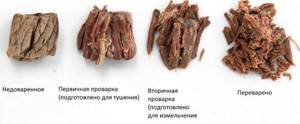
To determine how long to cook beef, you need to know which part of the animal will be cooked, since improper cooking can easily ruin the future dish.
For example:
- It is recommended to boil the brisket or thigh for at least 2.5 - 3 hours;
- sacrum and shoulder blades - approximately 2 hours;
- Cook frozen beef for 1.5 to 2 hours.
Cooking time also depends on the age of the animal and the size of the piece of meat. It is recommended to cook beef in pieces no larger than 2 kg so that the meat is as tender and juicy as possible.
Boneless meat, cut into small pieces, can be boiled in a double boiler or microwave. In this case, cooking will take from 25 to 40 minutes. Determining the readiness of boiled beef is simple: just pierce it with a fork 1-3 cm, and if the device goes in easily, then the meat is cooked, and if blood flows out of the hole from the fork, then you will need to cook more .
Beef harm
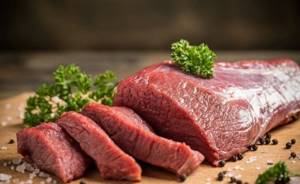
Despite many beneficial properties, beef can sometimes cause harm to the body. For example, scientists around the world believe that beef meat, more than any other meat, contributes to the development of colon cancer when consumed regularly or excessively.
What the animal was fed also matters:
- Nowadays, most pets are fed special food.
- Animals may not see clean meadows and fields in their entire lives.
- Harmful elements contained in animal feed naturally enter our body along with meat and can negatively affect it.
Harmful effects may also be due to the method of preparing meat. It is believed that fried beef, due to the resulting carcinogens, does more harm than good, although it is tasty. Purine bases in beef may contribute to the development of gout.
How much protein does a person need per day?
The daily norm is different for men and women. For women, this is a minimum of 1 gram of protein for every kilogram of your weight. That is, for a girl weighing 65 kg, the norm is 65 grams. If she attends sports training daily, then the norm increases to 1.3 grams. Use the table to determine which foods contain more protein in order to correctly increase your intake.
Men should consume 1.2-1.4 grams of protein per kilogram of body weight without exercising frequently. This amount also needs to be increased with regular visits to the gym (up to 1.6-3 grams). If you want to build muscle, then the basic calorie content of your daily diet can be increased by 20-40%. The protein content can be increased to a maximum of 35% per day without harm to health. It is found in almost all food groups; use the table to find out which foods are rich in protein and which are not.
Composition of nutrients, BJU
Raw beef
| For quantity: 100 grams | ||
| Calories — 172 | Calories from fat - 87 | |
| BJU | ||
| Total fat content | 9.71g | |
| Saturated | 3.87g | |
| Polyunsaturated | 0.44g | |
| Monounsaturated | 4.47g | |
| Cholesterol | 66mg | |
| Total carbohydrate content | 0.06g | |
| Dietary fiber | 0g | |
| Sugar | 0g | |
| Squirrels | 20.65g | |
| Vitamins and microelements | ||
| A - 2.2 µg | C - 0mg | |
| B-6 – 0.46 mg | B-12 - 2.61mcg | |
| D - 0.1 µg | E - 0.19 mg | |
| Calcium 10mcg | Iron 2.16mg | |
| Magnesium 20.8 mg | Zinc 5.74mg | |
| Potassium 324 mg | Sodium 67 mg | |
Distribution of calories for BJU:Carbohydrates (2%) Fats (50%) Proteins (48%) | ||
Beef - composition, calorie content and beneficial properties
Beef is the meat of cattle, which is subjected to various processing methods, including heat. Many dishes are prepared from this product: first and second courses, appetizers, sausages, etc. Beef is an amazing meat that, when consumed in moderation and wisely, brings great benefits to the human body. Meat is especially useful for those who watch their figure and play sports. To avoid health problems, you should be aware of the calorie content of the product and contraindications to its use. You will learn about this and much more from our article.
Chemical composition and benefits of the product
The benefits of beef are due to its rich chemical composition. It contains vitamins, minerals, micro- and macroelements, amino acids and other biologically active substances. Beef contains the following vitamins: A, E, C, K, D. B vitamins in red meat are represented by a wide list: B1, B2, B3, B4, B5, B6, B9, B12.
There is a sufficient amount of amino acids in beef: glutamic, aspartic, tryptophan, lysine, leucine, threonine, methionine, cystine, phenylalanine, alanine, glycine, proline, serine. Beef is rich in useful microelements (iron, iodine, fluorine, copper, nickel, cobalt, molybdenum, chromium, tin, zinc, manganese) and macroelements (potassium, calcium, magnesium, chlorine, sodium, sulfur, phosphorus).
© Andrey Starostin — stock. adobe. com
These substances individually have a beneficial effect on certain areas of the body, and together they improve overall health. Beef is a satisfying, nutritious and low-calorie product. The main beneficial property of this meat is the presence of complete animal protein, which is easily digestible. For this reason, professional athletes and just people trying to keep in shape prefer beef. Animal protein helps saturate the cells of the human body with oxygen. The greatest amount of protein is found in such a part of the cattle carcass as tenderloin. At the same time, there is very little fat in red meat: there is even less fat in beef than in chicken, and even more so in pork and lamb.
Let's now talk in more detail about the positive effects of the vitamins contained in beef.
TOP 100 foods and dishes rich in protein
The table of proteins in foods per 100 grams is very easy to use. In it you will find the top of the most protein foods and a list of popular ready-made dishes indicating their calorie content. It must be remembered that the nutritional value of dishes is influenced by the method of their preparation. Using our service, you can correctly determine the composition of food, remove unnecessary elements and calories from your diet, and create only a healthy menu for yourself and your family.
| Name of products and dishes | Squirrels | Fats | Carbohydrates |
| Protein powder | 73,3 | 1,8 | 7,0 |
| Egg powder | 45,0 | 37,3 | 7,1 |
| Soybeans | 34,9 | 17,3 | 26,5 |
| Dry yolk | 34,2 | 52,2 | 4,4 |
| Boiled chicken fillet | 30,4 | 3,5 | 0,0 |
| Steak | 27,8 | 29,6 | 1,7 |
| Dried porcini mushrooms | 27,6 | 6,8 | 10,0 |
| Peanut | 26,3 | 45,2 | 9,7 |
| Whole milk powder | 26,0 | 25,0 | 37,5 |
| Dutch cheese | 26,0 | 26,8 | 0,0 |
| Poshekhonsky cheese | 26,0 | 26,5 | 0,0 |
| Swiss cheese | 24,9 | 31,8 | 0,0 |
| Lentils | 24,8 | 1,1 | 53,7 |
| Russian cheese | 24,1 | 29,5 | 0,3 |
| Peas | 23,0 | 1,6 | 57,7 |
| Whole peas | 23,0 | 1,2 | 53,3 |
| Tuna | 22,7 | 0,7 | 0,0 |
| Ham | 22,6 | 20,9 | 0,0 |
| Beans | 22,3 | 1,7 | 54,5 |
| Chum salmon | 22,0 | 5,6 | 0,0 |
| Turkey | 21,6 | 12,0 | 0,8 |
| Chicken thighs | 21,3 | 11,0 | 0,1 |
| Chickens | 20,8 | 8,8 | 0,6 |
| Salmon | 20,8 | 15,1 | 0,0 |
| Rabbit | 20,7 | 12,9 | 0,0 |
| sunflower seed | 20,7 | 52,9 | 5,0 |
| Pink salmon | 20,5 | 6,5 | 0,0 |
| Small saury | 20,4 | 0,8 | 0,0 |
| horsemeat | 20,2 | 7,0 | 0,0 |
| Veal | 19,7 | 1,2 | 0,0 |
| Sea eel | 19,1 | 1,9 | 0,0 |
| Escalope | 19,0 | 42,8 | 6,8 |
| Whitefish | 19,0 | 7,5 | 0,0 |
| Zander | 19,0 | 0,8 | 0,0 |
| Beef | 18,9 | 12,4 | 0,0 |
| Halibut | 18,9 | 3,0 | 0,0 |
| Pork liver | 18,8 | 3,6 | 0,0 |
| Burbot | 18,8 | 0,6 | 0,0 |
| Chickens | 18,7 | 7,8 | 0,4 |
| Curd cheesecake | 18,6 | 3,6 | 18,2 |
| Large saury | 18,6 | 20,8 | 0,0 |
| Almond | 18,6 | 57,7 | 13,6 |
| River perch | 18,5 | 0,9 | 0,0 |
| Horse mackerel | 18,5 | 5,0 | 0,0 |
| Carp | 18,4 | 5,3 | 0,0 |
| Pike | 18,4 | 0,8 | 0,0 |
| Chicken cutlets | 18,2 | 10,4 | 13,8 |
| Ide | 18,2 | 1,0 | 0,0 |
| Mackerel | 18,0 | 9,0 | 0,0 |
| Squid | 18,0 | 0,3 | 0,0 |
| Shrimp | 18,0 | 0,8 | 0,0 |
| Brynza (cow's milk cheese) | 17,9 | 20,1 | 0,0 |
| crucian carp | 17,7 | 1,8 | 0,0 |
| Herring | 17,7 | 19,5 | 0,0 |
| Cottage cheese casserole | 17,6 | 4,2 | 14,2 |
| Sea bass | 17,6 | 5,2 | 0,0 |
| Cod | 17,5 | 0,6 | 0,0 |
| Beef liver | 17,4 | 3,1 | 0,0 |
| Salaka | 17,3 | 5,6 | 0,0 |
| Cottage cheese 5% low-fat | 17,2 | 5,0 | 1,8 |
| Bream | 17,1 | 4,1 | 0,0 |
| Sterlet | 17,0 | 6,1 | 0,0 |
| Processed cheese | 16,8 | 11,2 | 23,8 |
| Beef stew | 16,8 | 18,3 | 0,0 |
| Som | 16,8 | 8,5 | 0,0 |
| Beef Stroganoff | 16,7 | 11,3 | 5,9 |
| Cottage cheese 9% semi-fat | 16,7 | 9,0 | 2,0 |
| Hake | 16,6 | 2,2 | 0,0 |
| Low-fat cottage cheese | 16,5 | 0,0 | 1,3 |
| Ducks | 16,5 | 61,2 | 0,0 |
| Flounder | 16,5 | 1,8 | 0,0 |
| Boiled pork | 16,4 | 18,3 | 1,0 |
| Pork lean | 16,4 | 27,8 | 0,0 |
| Sturgeon | 16,4 | 10,9 | 0,0 |
| Mutton | 16,3 | 15,3 | 0,0 |
| Geese | 16,1 | 33,3 | 0,0 |
| Navaga | 16,1 | 1,0 | 0,0 |
| Blue whiting | 16,1 | 0,9 | 0,0 |
| Hazelnut | 16,1 | 66,9 | 9,9 |
| Baranki | 16,0 | 1,0 | 70 |
| Carp | 16,0 | 5,6 | 0,0 |
| Crab | 16,0 | 0,5 | 0,0 |
| Pollock | 15,9 | 0,7 | 0,0 |
| Smelt | 15,4 | 4,5 | 0,0 |
| Walnut | 15,2 | 61,3 | 10,2 |
| Pork heart | 15,1 | 3,2 | 0,0 |
| Caesar salad | 15,0 | 10,0 | 9,0 |
| Beef Heart | 15,0 | 3,0 | 0,0 |
| Pork stew | 14,9 | 32,2 | 0,0 |
| Acne | 14,5 | 30,5 | 0,0 |
| Pork tongue | 14,2 | 16,8 | 0,0 |
| Beef goulash | 14,0 | 9,2 | 2,6 |
| Beef Tongue | 13,6 | 12,1 | 0,0 |
| capelin | 13,4 | 11,5 | 0,0 |
| Macrurus | 13,2 | 0,8 | 0,0 |
| coal fish | 13,2 | 11,6 | 0,0 |
| Rye bread | 13,0 | 3,0 | 40,0 |
| Chicken egg | 12,7 | 10,9 | 0,7 |
| Buckwheat kernels (buckwheat) | 12,6 | 3,3 | 62,1 |
| Hercules | 12,5 | 6,2 | 61,0 |
Raw beef in other servings:
172
1.72
| Qty | A portion | Calories | In the counter |
| 100 g | 172 | ||
| 1 g | 1.72 | ||
| 286 | 1 fillet = 166g | 286 | |
| 780 | 1 lb = 453.6g | 780 | |
| 49 | 1 ounce = 28.35g | 49 | |
| 2466 | 1 roast = 1433.67g | 2466 | |
| 702 | 1 steak = 408.2g | 702 |

